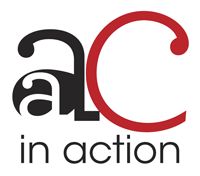Augmentative and alternative communication, AAC, refers to communication strategies that supplement speech. AAC is used to improve social interaction, language development, and learning. There are different forms of AAC such as picture symbols, communication boards, modified sign language (i.e., manual signs), gestures, facial expressions, low-tech voice output buttons, and high-tech speech generating devices.
This report offers examples of low- and high-tech forms of AAC:
https://www.iidc.indiana.edu/pages/the-augmentative-alternative-communication-spectrum
This site offers examples of AAC strategies and materials:
http://praacticalaac.org/
Severe communication challenge refers to one’s ability to use or to understand speech. Someone with a severe communication challenge may be limitedly verbal or considered non-verbal. For example, they may be able to produce some words but can not spontaneously use them to interact with others. They may produce thoughts in verbal sentences but their articulation of words makes what they say difficult to understand because they omit certain sounds or syllables within words, or they may create only certain sounds, syllables or vocalizations.
Language development is an active and ongoing process that uses vocabulary to understand and communicate with others. It relates to the way words are put together as phrases, sentences, and expanded thoughts. Language takes into account the context (where and with whom communication is happening) and includes interpretation of facial expressions, gestures, and vocal tone. We process and organize each of these areas of language in order to communicate to others and to understand what is communicated to us.
We sponsor meetings aimed at sharing ideas and challenges related to implementation, research, and training in the area of language and communication development. To learn of upcoming meetings, join our listserv by contacting AAClab@indiana.edu
Indiana AAC Summit
A venue where by practitioners within the field of AAC gather to share and learn from applied research and from each other.
Camp Connections
MCCSC Schools and Indiana University Speech and Hearing Sciences team up two weeks each summer to provide local MCCSC students with fun filled action centered around language and communication. At the same time CC provides professional development for MCCSC staff and students in IU’s Speech and Language Pathology program.


